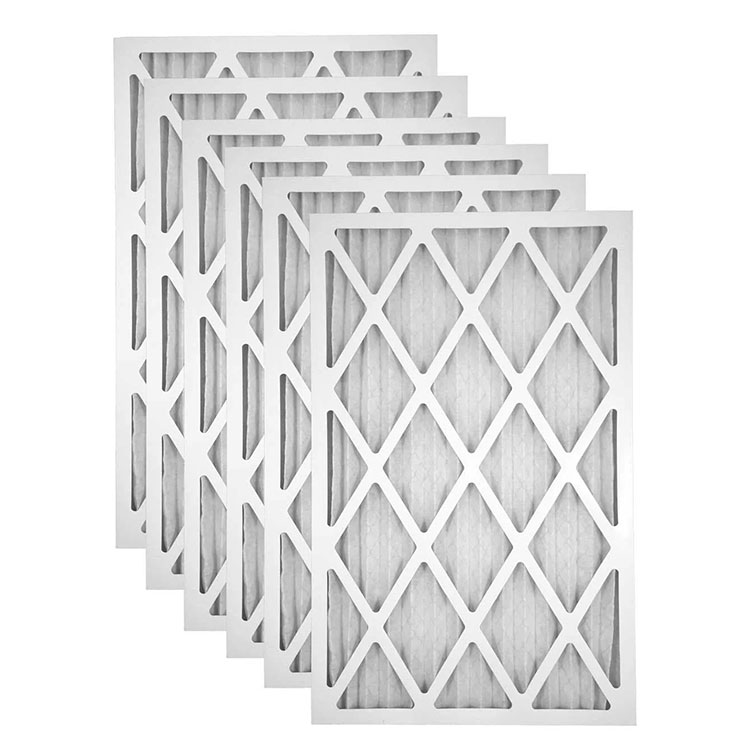Which Air Filter strategy actually lowers costs and protects equipment?
2025-11-21
I stopped believing in glossy spec sheets the day a clogged booth cost us a weekend of production. Since then I judge filtration by outcomes, not adjectives. With Star Machine I choose an Air Filter that keeps pressure drop low and steady, locks out bypass at the gasket, and captures fines before they ever touch coils or product. The payoff is simple on a noisy, dust-heavy line—longer service life, cleaner equipment, fewer change-outs, and visible savings on the energy bill—exactly the advantages I expect every time I sign off a spec.
What pain points do I see most often?
- Unexpected pressure drop that drives up fan energy and quietly eats margins
- Short change-out intervals because the Air Filter is mis-matched to dust size or humidity
- Bypass leaks around the frame that let fines slip past and foul coils or sensitive equipment
- Confusion over MERV or efficiency claims that do not reflect real airflow
- Inventory sprawl with too many SKUs and no standard triggers for replacement
How do I choose the right rating without overpaying?
If a process is sensitive to sub-micron particles, I step up media efficiency and make sure static pressure stays within the fan curve. If the environment is mainly coarse dust, I prefer a durable prefilter that protects a secondary stage. In every case I ask one question: will this Air Filter maintain stable differential pressure through most of its life, not just on day one?
- Define the smallest particle that truly matters to quality or safety
- Check the fan’s available static and target velocity at the filter face
- Match media to dust profile: pleated synthetic for mixed loads, fiberglass for low cost prefiltration, melt-blown or glass microfiber for fine capture
- Set a change-out trigger by differential pressure, not by calendar alone
Why does total cost of ownership beat unit price?
Unit price is visible, but energy, downtime, scrap, and labor decide the real bill. A slightly higher-grade Air Filter that keeps pressure drop steady can pay for itself through lower kWh and fewer coil cleanings. I track four buckets: energy, maintenance labor, scrap or rework from contamination, and unplanned downtime. When those numbers move, the filter decision gets simple.
Which specification checklist keeps my team aligned?
I keep a one-page spec that any buyer or technician can use. It prevents guesswork and standardizes the change-out rule across sites.
| Scenario | Recommended Media | Target Efficiency | Initial ΔP (in w.c.) | Change-out Trigger | Notes |
|---|---|---|---|---|---|
| General HVAC in offices or light manufacturing | Pleated synthetic | MERV 8–11 | ≤ 0.25 | When ΔP doubles or reaches 1.0, whichever comes first | Balance clean coil protection with fan capacity |
| Paint or finishing areas with visible defects risk | High-efficiency microglass | MERV 13–15 | ≤ 0.35 | ΔP limit from booth spec or quality threshold | Consider a prefilter to extend life |
| Dusty machining or woodworking with heavy load | Deep-pleat synthetic or cartridge | MERV 11–13 | ≤ 0.30 | ΔP rise of 0.6–0.8 over baseline | Watch humidity to prevent caking |
| Labs and sensitive assembly zones | Final stage microglass, prefilter upstream | High efficiency final stage | As per housing spec | Based on validated ΔP and particle counts | Seal integrity matters more than paper rating |
What maintenance routine prevents surprise downtime?
- Record a clean-install baseline ΔP for each Air Filter location
- Use a simple differential pressure gauge and log weekly values
- Replace when the trigger is met, not when the calendar flips
- Inspect gaskets and frames so bypass does not undo your capture efficiency
- Rotate stock first-in first-out and keep a minimal, standardized SKU set
Where do Air Filter failures actually start?
They start at the seal, the housing, or the sizing. If the frame flexes, the Air Filter can leak under load. If the housing is out of square, the gasket will not seat. If the face velocity is too high, particles penetrate and pressure drop spikes early. I fix the frame and housing first, then I upgrade media only if the process truly requires it.
Can data help me prove ROI to finance?
Yes. I log ΔP, kWh from the fan system, change-out labor time, and any defects linked to contamination. With that, I calculate the total cost per operating hour for each Air Filter choice. When I show a trend line that flattens energy use and reduces change-outs, the discussion turns into a business decision, not a debate over catalog pricing.
Who is this approach right for?
I rely on it in electronics assembly, woodworking, food packaging, small paint lines, and mixed-use facilities with both office and shop air. If your quality team fights recurring fines or your maintenance crew swaps filters too often, a matched Air Filter plus a simple ΔP program will calm the noise and free up hours.
How do I start the conversation today?
- Tell me your fan model, typical airflow, and current ΔP at each stage
- Share your dust profile and where defects or fouling show up
- Confirm the housing size and gasket type so the Air Filter actually seals
- Set a pilot line with one change-out rule and measure for a month
Ready to solve your filtration bottleneck?
If you want a practical plan that stabilizes pressure, protects equipment, and shows a clear payback, I can help you map it step by step with the right Air Filter for your environment. Reach out and contact us to request a quick audit and a trial schedule. Send your airflow and ΔP details, and I will reply with a concise recommendation you can implement immediately.




